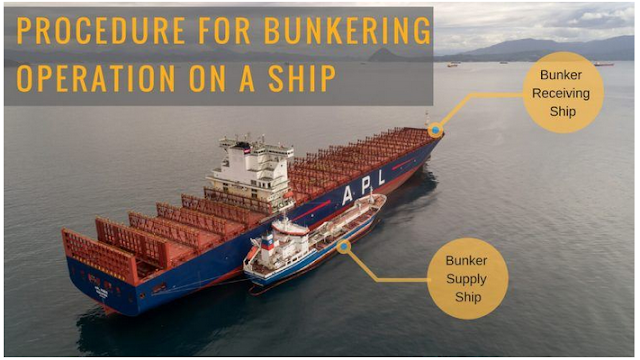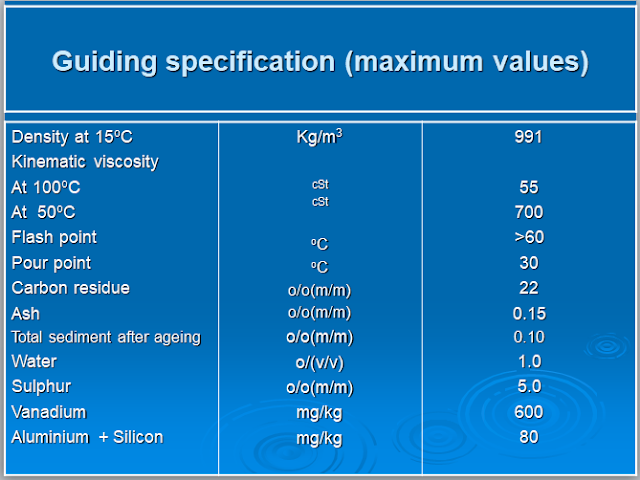Procedure for Bunkering Operation on Ships
Procedure for receiving and transferring fuel oil and lubricating oil shall be in accordance with this procedure to prevent any oil spillage and environmental pollution.
- The Master shall ensure that Deck and engine departments have carried out their safety precautions during the bunkering operations
- The Chief engineer shall be responsible for safe bunkering and transferring any bunker on board. All shipboard Engineers including Chief engineer shall familiarize themselves with the vessel’s piping, valves, tanks etc. making reference to the available bunker line diagram as necessary.
- Shipboard personnel are responsible as per their individual duties and responsibilities for safe bunkering.
baca: prosedure bunker bahasa indonesia
STANDARD BUKERING PROCEDURE
- The Chief engineer shall inform the master prior to any transfer of oil or oily waste. this includes the shipment of bunkers and disposal of oil or oily
- Mooring lines are to be made ready for the bunker barge if necessary.
- Hot work or others inappropriate work on deck is to be suspended.
When loading or transferring oil or discharging oily mixtures, the following precautions must be observed.
- Preparing of bunker plan
- Preparations and dissemination of job distribution
- Preparing checklist relating to bunker plan
- Prepare and check / test the communication mean.
BEFORE BUNKERING
- Vessel is to be securely moored to the berth before the bunker barge comes alongside.
- At anchorage, procedure for ship to ship operations is to be complied with.
- Moorings inspected at times and attended at berth.
- At anchorage, check if vessel is dragging after the bunker barge is alongside.
- All valves through which oil can be discharged to the sea should be inspected to ensure that they are closed.
- The Chief engineer shall confirm that all valves connected to the bunkering system are properly set. Valves that are not in use should be secured / marked so that none can open it.
ANTI – POLLUTION PRECAUTIONS
- A Bunkering Plan is completed, sighted and initialed by master. Bunker Plan is to be displayed preferably near the bunker station.
- All scuppers are to be plugged.
- If rain, water accumulated must be drained off at times and scupper plugs replaced.
- Drip trays of adequate size are to be placed where necessary
- Save –alls are to be drained and plugged
- Oil spill gears such as sawdust, rags etc. are to be positioned close to be the manifold.
- Spilled oil should not be washed overboard.
- In the even of an oil spill, bunkering operation are to be immediately suspended and necessary cleaning up procedures shall be started. The master shall immediately notify the port authority and take whatever action necessary for safety and pollution prevention. Detail action required are provided in SOPEP.
COMMUNICATIONS
- Communication between bunker station and Engine Room must be tested and working.
- Communication between ship/shore or between ship/barge are to be established.
- Signals including emergency stop between ship and shore/barge are to be agreed.
- International Flag “B” or red light at night is to be displayed.
FIRE PRECAUTIONS
- No smoking sign is to be displayed
- Fire hose rigged and portable fire extinguisher are ready near bunker station.
- All side door, ports etc. are to be in closed position.
“Agenda” of bunkering ”Pre-delivery conference” between bunker tanker, vessel and bunker surveyor
- Safety Fire fighting
- Emergency Preparedness
- Condition of crew
- Bunkering pre-delivery safety checklist
- Safety work practices
- Safe access
- General communications
- Emergency shutdown
- Health
- Accommodation opening
- Material safety data sheet ( MSDS)
- Environment
- Scuppers
- Oil Spill
INSPECTION OF EQUIPMENT
- Shore/barge hoses are to be inspected for any leaks.
- Hoses are to be properly connected and supported
- Ensure the hoses are of sufficient length and not bent badly exceeding their limit.
- Pressure gauge, if fitted at the manifold connection are to be checked for functioning.
- Ensure the weight of hoses in relation to be lifting capacity of the derrick/davit
SEQUENCE OF TANKS AND ESTIMATED FINAL SOUNDINGS
The Chief engineer has to ascertain his tanks bunker plan and discuss the sequence of tanks to be bunkered. The Chief engineer shall record followings in tanks sequence and their estimated final soundings.
- Tanks to be bunkered.
- Estimated final quantity and final sounding after bunkering.
- Critical capacity and critical soundings of each tank.
OVERALL INSPECTION
- The Chief engineer shall make an overall inspection on the pre-bunkering checks and satisfy himself by signing it.
- The Master shall ensure that bunkering checks are positively carried out and all departments take all safety precautions.
DURING BUNKERING
Slow Start
- Bunkering should commence at a minimum pumping rate so that the supply of fuel can be readily stopped in the event of a mishap.
- The pressure in the supply lines should be regularly observed to ensure that the maximum working pressure is not exceeded.
Surface of Water around Ship
Check the surface of the water once the bunkering has started, to verify if any leakage from any source
Frequent Soundings of Bunker Tanks
- The tanks should be frequently gauged and monitored for the loaded quantity in respect of estimated final quantity.
- The attending staff taking tanks sounding shall not exceed the critical soundings.
- The filling valves of the next tanks in sequence should be open before the valves on the tanks to be shut down are closed.
Topping-Up / Completion of Operation
- While “Topping up” tanks, the delivery rate should be slowed down when necessary, and ample warning should be given to the suppliers if it is necessary to slow down at any stage of the operation.
- The valves on the ship’s lines must not be closed against the flow of the incoming oil, and after the bunkering operation is finished, they should remain open until the lines and hoses are drained.
After Bunker
- On completion of the bunkering operation and after the hoses have been drained, an empty drip tray is to be placed below the hose couplings while the flanges are separated, and a blank flange fitted to the end of the filling line.
- All fuel line and bunker tank filling valves should be securely closed and a final check of the soundings of all fuel oil tanks should be made.
- A blind flange is to be fitted to the supply hoses before any attempt is made to lift it clear of the ship.
- The chief engineer shall check quantity received on board against supplier’s delivery order, before he acknowledges.
- The deck duty officer shall discontinue the bunkering signal.
- The surface of the water around the ship is to be checked for absence of an oil film.
RECORDS ( Documents )
- Bunkering Plan
- Bunker r Requisition form
- Non-cargo tank declaration form
- Bunkering Check Lists
- Tank measurement & calculation form
- Bunker delivery note
read the: oil record book
Share this




silahkan berkomentar secara bijak dan sesuai dengan topik pembahasan. TERIMAKASI